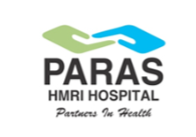Healthy posture and good lifestyle habits can prevent most cases of back pain and other spinal disorders, say doctors at Paras HMRI Hospita, Patna
With highly improved technology, spine surgery has become much safer and effective today; so have diagnostic procedures

Patna, October 19, 2016: Do you know that a large number of cases of back ache and other spinal disorders such as ruptured disc can be avoided if one adopts a good posture and regular exercise in his/her daily life?
As we observe World Spine Day, doctors and spine experts at Paras HMRI Hospital today underlined the fact that spine problems are among the most common reasons for hospital visits and healthy living habits can prevent many such disorders.
October 16 is observed as World Spine Day every year when people from around the world join hands to raise awareness about spinal disorders.
“Spinal disorders are among the most common causes of hospital visits around the world. Most common spinal disorders include low back pain, neck pain, scoliosis and disc disease, to name a few. Spinal pain and disability can have a profound effect on a person’s overall health, sometimes preventing them from working or even doing simple daily activities. Over 80 per cent of adults will suffer back pain at some point in their lives. 50% of the working population will experience back or neck pain symptoms at least once per year. Age is one of the most common risk factors for spinal pain, and the greatest effects of population ageing are predicted in low- and middle-income countries. Back and neck pain is one of the most common reasons for workplace sick leave,” said Dr. Gautam R. Prasad, Spine Surgeon, Paras HMRI Hospital, Patna, at a press conference today.
The good aspect is that many of these common problems can be avoided by undertaking simple lifestyle changes and adopting healthy habits.
Poor posture and inactivity are major contributors to the development of back pain and other spinal disorders. According to the World Health Organization, one in four adults is not active enough and over 80% of adolescent population is not active enough. In fact, the theme of World Spine Day (WSD) 2016 is “Straighten Up and Move” aimed at highlighting the importance of physical activity and improving posture as part of good spinal health and prevention of injury.
Healthy posture and habits can help to maintain healthy back and healthy spine. Surgery is required in selective patients only else majority of spinal disorders can be managed by non surgical management under guidance of an experienced spine surgeon.
“The good news is that 80- 90 % of the spine disorders can respond to life style changes, proper
Ergonomics and physiotherapy. It’s the remaining patients who require surgical intervention.
Non surgical managements include proper posture while sitting, reading, writing, lifting weight,
using mobile etc. Regular walk, yoga, exercises, physical activities and sports help in
maintaining a healthy spine. In fact, by maintaining a good posture and ensuring a daily
physical exercise of at least 30 minutes can prevent a number of spinal problems,” said Dr.
Prasad.
Another important part of maintaining good spine health is controlling weight as excessive weight is among the leading causes of spinal injuries such as slipped disc.
With the advances in anaesthesia, spine surgery can be performed safely including on patients suffering from blood pressure, diabetes, heart disease and other co morbidities. Also with availability of techniques such as like fluoroscopy and neuro-monitoring, execution of spinal surgery has become much safer today. Ct scan navigation, O arm has increased the precision with which instrumentation in spine can be done. Patient undergoing spine surgery, are mobilized within 24 to 48 hrs after surgery. In case of patients presenting with spinal cord injury, mobilization depends on the severity of spinal cord injury and its recovery seen post surgery.
Usual presentation of spine problems are –
Pain in neck / back
Radiating pain or tingling / numbness in arms or legs
Weakness in hands or legs
Imbalance while walking
Decrease in walking speed & distance due to leg pain / heaviness
Difficulty in standing, sitting, walking due to back or leg pain
Difficulty to control urine / stool
Bone Tb— affecting vertebrae
Spinal tumor
Fracture vertebrae & spinal cord injury
Deformity of spine– scoliosis , kyphosis
